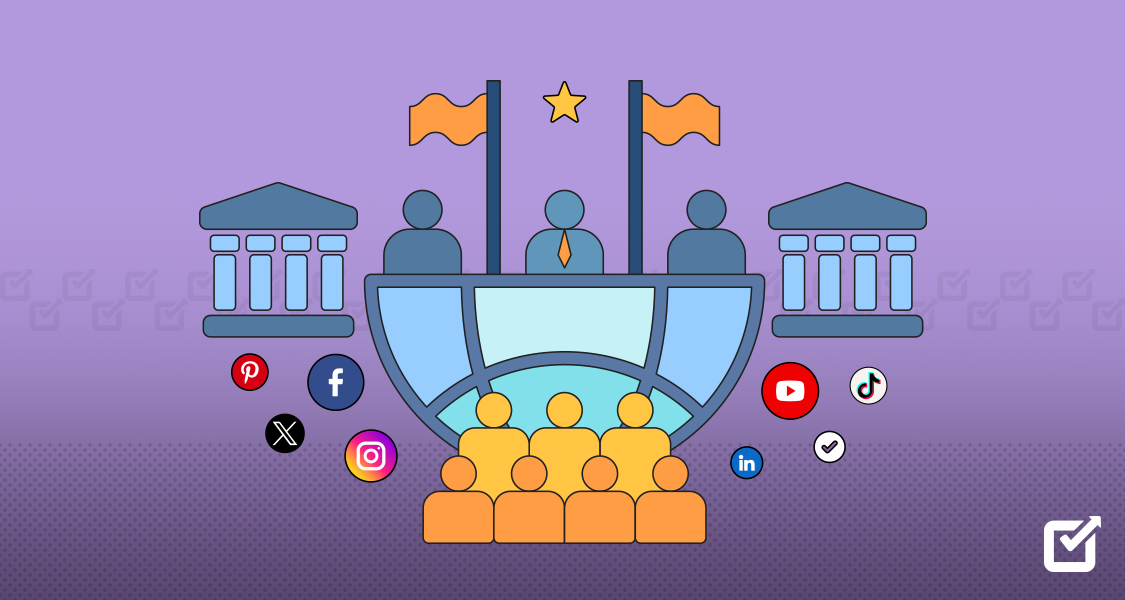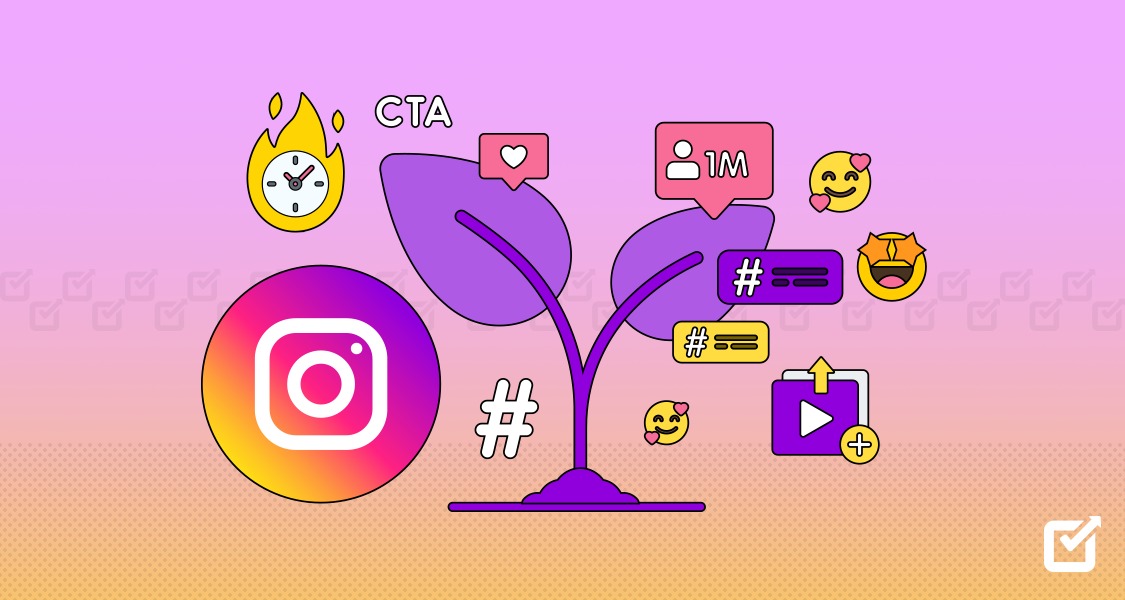In 2024, politicians and their teams are thinking of new ways to use social media and why not?
Social media is the most powerful marketing tool they can leverage. But, they also have to follow certain rules and behave ethically online. Social media and politics are interconnected nowadays. It lets politicians talk directly to voters.
They can share their ideas, respond to what people think, and try to shape discussions on important issues. But it’s not just about posting messages; it’s about having meaningful conversations and building a community of supporters.
However, Social media isn’t just useful for talking to voters. It’s also a tool for political advertising. Politicians can use targeted ads to reach specific groups of people, tailoring their messages to appeal to different voters. However, this has raised some concerns about privacy, false information, and manipulation, leading to more rules and checks.
Running a successful social media campaign can be challenging. But with the right strategies and the use of platforms like Social Champ, politicians can connect with voters personally, influence public discussions, and potentially win the election. This blog post will help you understand how social media and politics work together, along with the latest rules, the best ways to use them, and how to run successful campaigns.
Social Media and Politics: Stats and Facts
Before we explore the methods and plans for winning in politics through social media, it’s crucial to understand the overall situation. Here’s a quick look at how big the connection between social media and politics is.
- A median of 57% of people across surveyed countries believe that social media has been beneficial for their democracy
- 18% of U.S. adults say social media is their most common way to get political and election news.
- 23% of U.S. social media users post about political issues.
- On Twitter, 45% of U.S. adults say they’ve tweeted about political issues.
- Close to two-thirds (64%) of US internet users said disinformation and fake news are most widespread on politics and social media.
- By 2013, over 60% of the public was using social media.
- The percentage of social media users has leveled off at nearly 70% since the 2016 presidential election.
- Widespread use of Facebook, Twitter, YouTube, and other social media has fueled the fire of extreme polarization.
- A report held in June 2022 among Gen Z and millennials in the United States found that Facebook, YouTube, and Twitter were the most used platforms for political news.
- More than half (54%) of social media users said that social media was very important or somewhat important to them for finding out about the 2020 presidential election.
- The average person spends about 2.5 hours each day on social media.
- People are twice as likely to engage with news on social media now than they were ten years ago.
- In recent elections, social media has directly influenced the political opinions of over a third of its users.
- About 22% of adults in the U.S. have changed their views on a political or social issue because of something they saw on social media.
- Almost 46% of registered voters who follow political figures on social media say the content has made them feel more politically involved.
- About 38% of adults in the U.S. often come across political content on social media that makes them angry.
- Around 20% of social media users have changed their stance on a social or political issue because of something they saw on social media.
- About 35% of social media users feel overwhelmed by the number of political posts and discussions they see.
- Nearly half (47%) of social media users think the political conversations they see on social media are angrier than those they see elsewhere.
- A majority (64%) of Americans believe that fake news has caused a lot of confusion about basic facts of current events.
Plan, Post, Schedule, Monitor With Social Champ!
Use our cutting-edge automation tools to make the most use of social media for your political campaigns and more. Sign in to start your free-trial now!

These statistics underscore the profound impact social media has on politics and public opinion.
How Social Media Has Transformed Political Campaigns

Social media, like Facebook and Twitter, has changed how political campaigns work. Instead of just talking to people in their homes or through TV debates, politicians now use posts on social media to attract voters. Let’s look at how politics and social media have changed.
There’s a rule in economics called Engel’s Law that talks about how we spend money. It has been updated to include politics and social media. The new rule suggests that as a campaign has more money, it spends more on social media ads.
In the 2016 elections, campaigns spent about $350 million on social media ads. This was more than what they spent on TV ads on cable and satellite, which was about $280 million. This information comes from a study by Borrell Associates, a company that researches media.
A big change because of social media is something called micro-targeting. This means campaigns send personalized messages to specific voters based on a lot of data. But this has made some people worried about privacy and whether it’s right or wrong.
Why Has Social Media Affected Political Campaigns
Social media, like Facebook and Twitter, has changed how politics and social media work and affected political campaigns a lot. It’s important to know why this is happening to make good campaign strategies.
One big reason is how fast information can spread on social media. This includes both true and false information. A tweet or a post can become very popular in just a few minutes, reaching thousands or even millions of people. This can be good for spreading a candidate’s message quickly, but it can also cause false information to spread fast.
Social media platforms also let candidates and voters talk directly to each other. Politicians can post updates, share their thoughts, and talk with voters as things happen. This makes voters feel more connected to the candidates and can make them feel more involved in the campaign.
Another big change because of social media and politics is the sharing of information. Even smaller campaigns that don’t have a lot of money for advertising can get attention from all over the country through social media. By posting interesting content and talking with followers, they can build a big online following and compete with bigger, more famous candidates.
Lastly, social media is interactive. It’s not just about watching or reading – it’s about taking part. People can comment, share, and like posts, and talk with other users. This can make people more involved in the political process, as they feel like they’re part of the conversation instead of just watching.
Related Article: How to Make Money on Social Media in 2024: A Step-by-Step Guide

Rules and Regulations for a Social Media Political Campaign
Running a political campaign on social media can be quite tricky because there are lots of rules to follow. Here’s an easier way to understand some of the main rules for social media and politics.
Transparency
Transparency means being clear and open. On many social media platforms, political ads have to clearly state who paid for them. This helps people know where the information they’re seeing is coming from.
Data Privacy
Data privacy means protecting personal information. There are laws in place, like the GDPR in Europe and different state-level laws in the US, which control how personal data can be used, especially when it comes to targeted ads. These rules make sure that campaigns respect people’s privacy and use their data in a responsible way.
Misinformation and Disinformation
Misinformation is when false or misleading information is spread without intending to cause harm, while disinformation is when false information is deliberately spread to deceive people. Social media platforms are working hard to stop the spread of false information which could interfere with the democratic process. This can affect how far your posts reach and whether your ads get delivered.
Remember, these rules can change depending on the platform, so it’s important for campaigns to understand and follow the specific guidelines set by each social media platform they use. They should also stay updated on changes in laws and regulations related to data privacy and misinformation.
Social Media and Politics in the Future
Social media and politics isn’t just something happening now. It’s also showing us what political communication might look like in the future. Here’s what we can expect:
More focus on influencer politics: In the future, popular people on social media, like digital celebrities and online personalities, could play a big role in influencing political campaigns.
Changes in how platforms handle free speech and false information are also expected. Social media platforms will continue trying to find the right balance between allowing free speech and stopping the spread of harmful false information about politics.
Possible new rules for social media and politics: As social media becomes more influential in elections, there might be new rules put in place. For example, there could be limits on how much campaigns can target specific groups of people with their messaging or how they can use data.
Featured Article: Choosing Catchy TikTok Captions to Go Viral in 2024
10+ Tips for Running a Political Campaign on Social Media
Here are actionable tips to help you shape a winning social media strategy for political campaigns in 2024.
- Start Early: Don’t wait until it’s election season to start working on your social media. Begin building a strong and real online image months or even years before the election.
- Choose the Right Platforms: You don’t have to be on every social media platform. Find out which ones are most popular with the people you’re trying to reach and focus on those.
- Share Your Story: People love stories. Create a story around your campaign that people can relate to and that will motivate them to vote.
- Use Content from Supporters: Encourage your supporters to create and share their own content that supports your campaign. This adds a sense of authenticity and can help your message reach more people.
- Be Responsible with Data: While data can help you target your audience, make sure you use it ethically and follow all laws about data protection. Being open about how you use data can help build trust with your audience.
- Host Q&A Sessions: Use live-streaming to host question-and-answer sessions with the public. This makes your campaign feel more human and lets you interact directly with voters.
- Take Advantage of Key Moments: Share content related to current issues, national holidays, and other important events. This can help your content get noticed and shared.
- Talk to Opponents’ Supporters: Having respectful conversations with people who support other candidates can show that you respect different opinions and can help your campaign reach a wider audience.
- Run Ethical and Transparent Ad Campaigns: Make sure your ads follow the rules of each social media platform and are clearly labeled as political advertising.
- Keep an Eye on Things and Be Ready to Change: Watch your social media stats and what people are saying about your campaign. Be ready to change your strategy based on what’s working and what’s not.
- Get Your Online Community Involved: Encourage your social media followers to share your content, support your campaign, and help organize events. Using things like hashtags and challenges can help get people excited about helping your campaign.
Take Away
The future of politics is online, the mix of social media and politics can be a great way for political candidates to connect with people, influence opinions, and get supporters involved. For the 2024 elections and beyond, being good at using social media will be very important for anyone running for office. However, it’s also very important to use these tools in a fair and responsible way, especially when it comes to using personal data and sharing information. Using a reliable social media management tool can be one way to ensure a safe use. By staying up-to-date and adjusting to changes in rules and guidelines on different platforms, campaigns can make the most of social media while also keeping the trust of voters.










